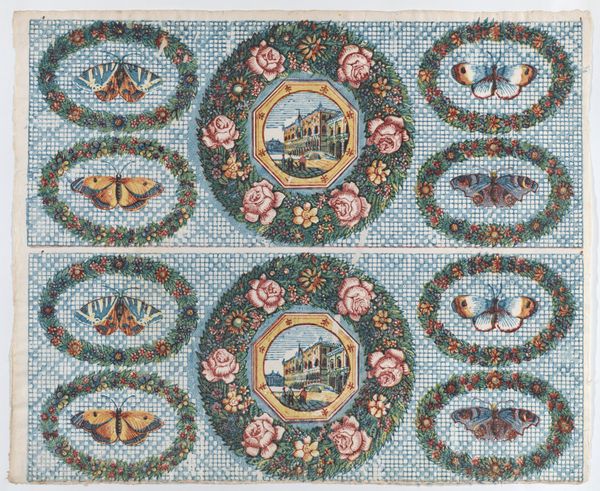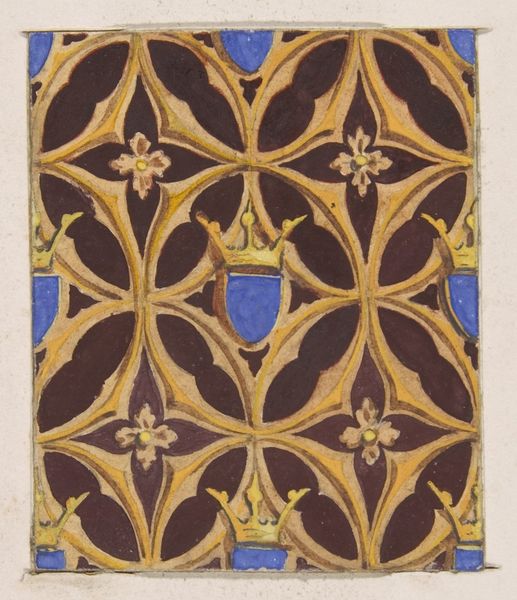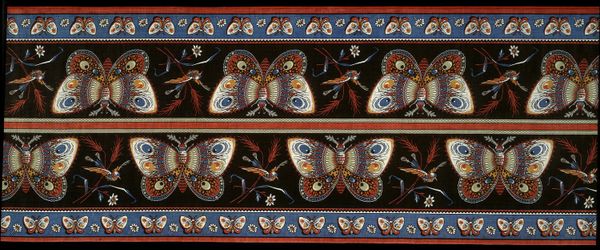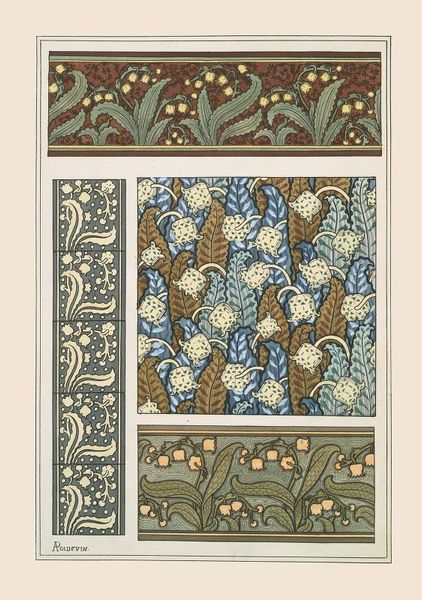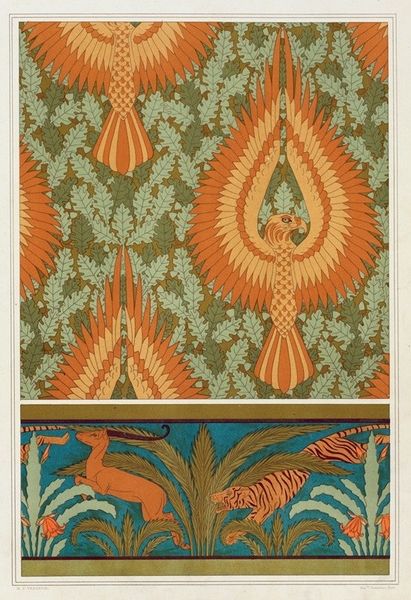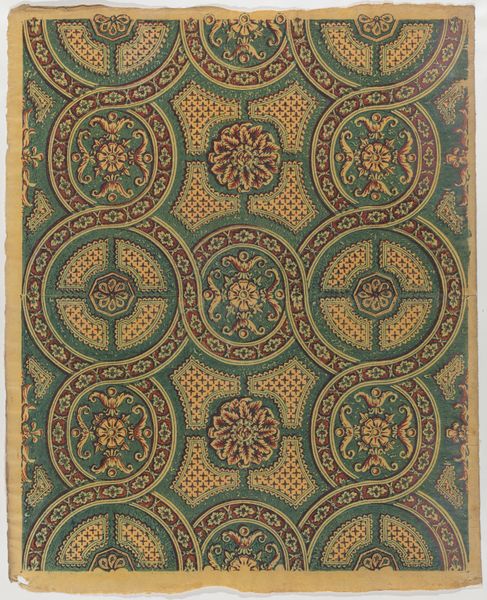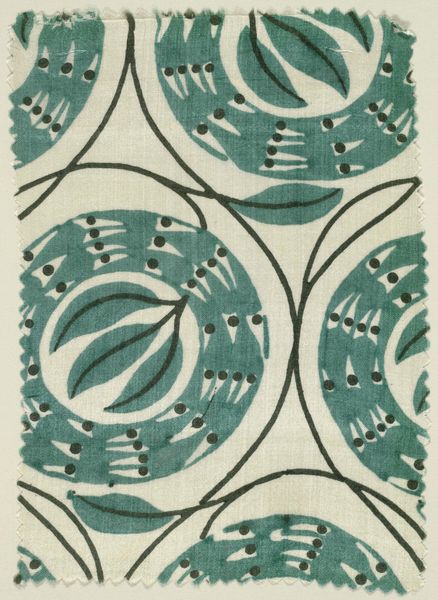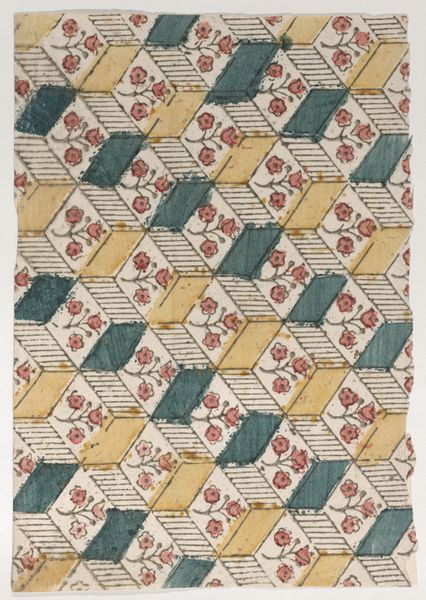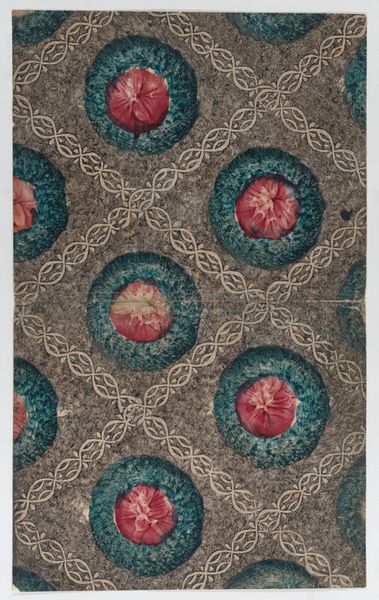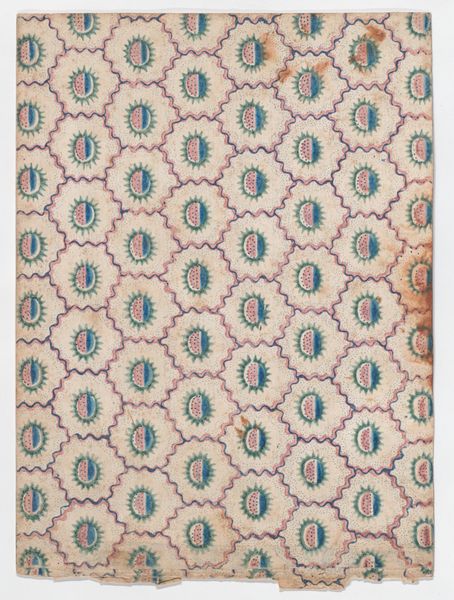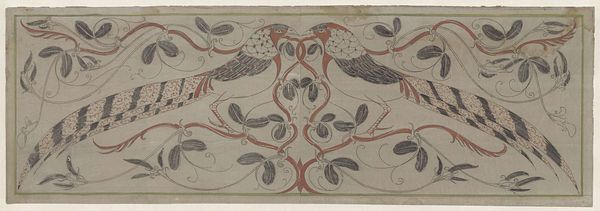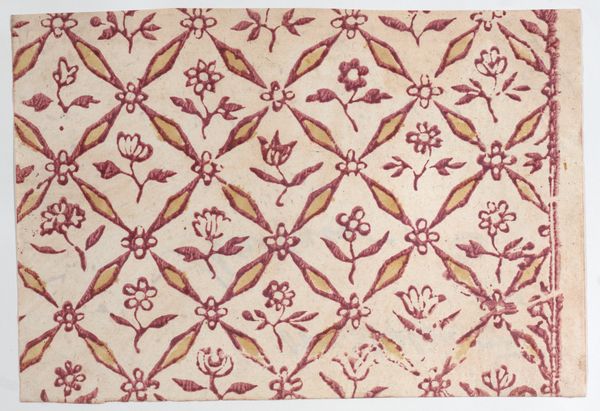
tempera, mural
#
tempera
#
ancient-egyptian-art
#
geometric pattern
#
geometric
#
mural
Dimensions: facsimile: h. 68 cm (26 3/4 in); w. 45 cm (17 11/16 in); scale 1:1; framed: h. 71.8 cm (28 1/4 in); w. 48.3 cm (19 in)
Copyright: Public Domain
Editor: So, here we have Nina de Garis Davies's "Ceiling Pattern, Tomb of Qenamun" from 1479 BC, a tempera mural originally from Egypt now held at the Met. I find it striking how fresh it looks, like a textile design even! What resonates most with you about this piece? Curator: What immediately strikes me is the symbolic language. Look at the lotus blossoms contained within those circular forms. What do lotuses typically represent in Egyptian art? Editor: Rebirth, right? They close up at night and re-emerge in the morning. So, renewal? Curator: Precisely. Consider where this pattern was located—a tomb. The image evokes the deceased's hopes for regeneration and eternal life, conveying powerful and deeply felt aspirations through stylized motifs. What about the geometric shapes framing the lotus patterns? Editor: Well, you have the spirals which often mean cycles and the triangles perhaps referencing pyramids? I’m wondering how strictly regulated these images were? I mean could any artist just make these or was there a real symbolic framework everyone had to follow? Curator: Excellent question. Egyptian art adhered to a canon of strict conventions. The consistency we see in imagery over centuries demonstrates how embedded these symbols were in their culture and belief system, ensuring specific narratives and values were transmitted to future generations. But how might an artist signal his own particularity or contribution in such a framework? Editor: Perhaps it's in the small variations of colour, the slight differences in spacing, like subtle inflections in a spoken language. The consistent symbols create the cultural language and offer artists chances for minor, individualized interpretation within it. Curator: Indeed. This makes one think about cultural memory – the continuous thread connecting us to the past through potent images. Editor: It gives such a powerful idea about what survives!
Comments
No comments
Be the first to comment and join the conversation on the ultimate creative platform.

